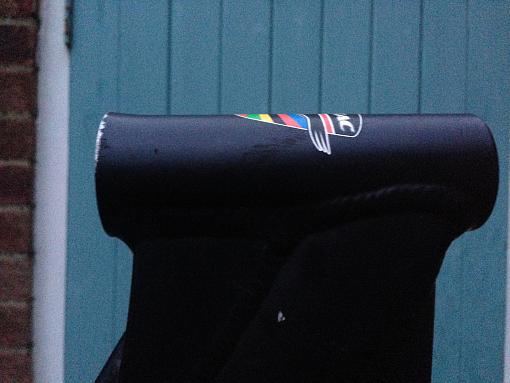We know, there’s no such thing as a stupid question. But there are definitely some questions too embarrassing to ask your local shop or riding buddies. This is the first in a weekly installment where we get to the bottom of your questions – serious or otherwise.
We’ll start this week with a thoughtful question from Stefan. We see new carbon bikes pop up all the time, but what kind of expenditure is needed to get those bikes from paper, to production?
Stefan writes: What’s the price range for a mold for a carbon mountain bike frame? I am trying to figure out, how much it costs to start producing mountain bikes if one develops his proper concept of frame and doesn’t just put his logo on an off-the-shelf-frame. I know it takes three sizes of the same frame, to be able to market one’s bikes, but let’s just start with the cost for the mold for one single frame model and size. Btw, I am not considering to start producing mountain bikes. I just want to find out, how much those who do have invested until they were able to sell their first bike. Thanks and regards. Stefan.
To find out, we reached out to a friend that we know is going through this exact situation as we speak…
Our source isn’t quite ready to reveal their product line, so for now it will have to remain anonymous, but they’be been shopping around for this very thing:
The quick answer is somewhere around $60,000 to $100,000 for a frame mold to do a full size run of one frame model. But, there are a whole lot of other expenses involved- those numbers are just for the steel mold itself. The engineering time of the frame, the carbon layup structure, the engineering time of metal parts on the frame like links, dropouts, any threaded inserts…all of this can add up to be significant. Then, the testing of the frame that comes out can definitely add up depending on how light you’re trying to make the frame and if you want to push the limits a lot. You have to break a lot of frames using expensive test equipment to get a product that you know you can produce consistently. Anyway, take what you want from that, but that’s my quick and very ambiguous run down. But it’s also accurate- for the exact same frame design I’ve gotten quotes on molds from different factories at just under $60k and then up to $100k.
Budeanu has some questions about a potentially damaged frame: Hello, I purchased a frame, a Tomac Omen, at a low price… I put it in the garage for a few months, and now I have decided to assemble it. And I found that head tube is slightly deformed, I searched the net if it’s something serious or dangerous. But I did not find reliable information. Someone says that once it is bent, it’s dangerous, someone says that is OK to it bend back, someone says to ask the producer what they think about it. That I would’ve tried to do, but Tomac had been dissolved. I do not know what to look for, and how dangerous is the frame. Please help me with any advice.
Unfortunately, it does look like the head tube is damaged enough to be considered unsafe. For the lower part of the headtube to be flared outwards like that, it must have taken a considerable impact – like 50/50 casing a jump that pushed the fork and front wheel outwards. Once a metal like aluminum has been expanded like that, there’s no real way to “bend it back.” You could probably get a headset to stay in there, but you risk one big impact splitting the head tube out the front. It that likely? Based on the thickness of the material probably not, but it’s also not something I would consider completely safe to ride. Also, if the head tube looks like that, there’s no telling what might lurk under the paint on the rest of the frame.
Personally, I bought a similar dirt jump frame back in the day that had been abused by its previous owner – though you couldn’t tell. I ended up ripping the head tube off it on a large drop. Fortunately I was ok, but that convinced me that on bikes like dirt jump frames, you’re probably better off with something new than a good deal. In short, it sucks that you bought this frame and now find out it’s damaged, but you’re probably better off in the long run to find something new and reliable.
Lastly, Thomas wants to know: Do fat bikes come in 29er? I am 5’7″. 30″ inseam.
If you’re asking if fat bike tires are available in 29 x 4.0″ or larger, then the answer is no. And you probably wouldn’t want that anyways, especially at your height. Those tires would be huge. Many fat bikes are compatible with 29+ (29 x 3.0″) wheels and tires though. Depending on the geometry of the frame it may raise your BB slightly and affect the handling. I’ve had better luck running 27.5+ (27.5 x 2.8-3.0″) tires on fat bikes with minimal effect on the handling.
Currently, true fat bikes come in 26 x 4.0″+ or 27.5 x 3.8″+, both of which should fit you depending on your needs. The 27.5″ fat bikes seem to be better suited for trail riding, while the 26″ fat bikes offer better flotation in many situations.
Got a question of your own? Click here to use the AASQ form, or find the link under the Contact menu header up top anytime a question pops into your mind!

